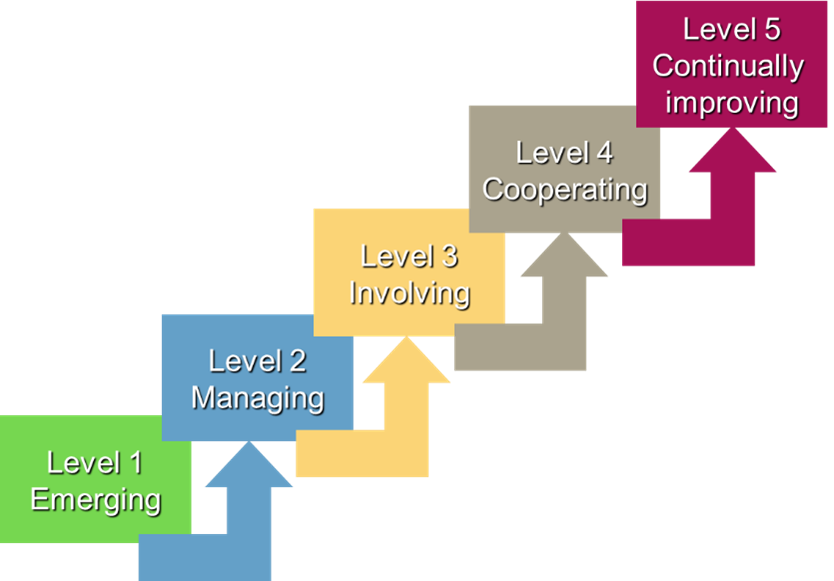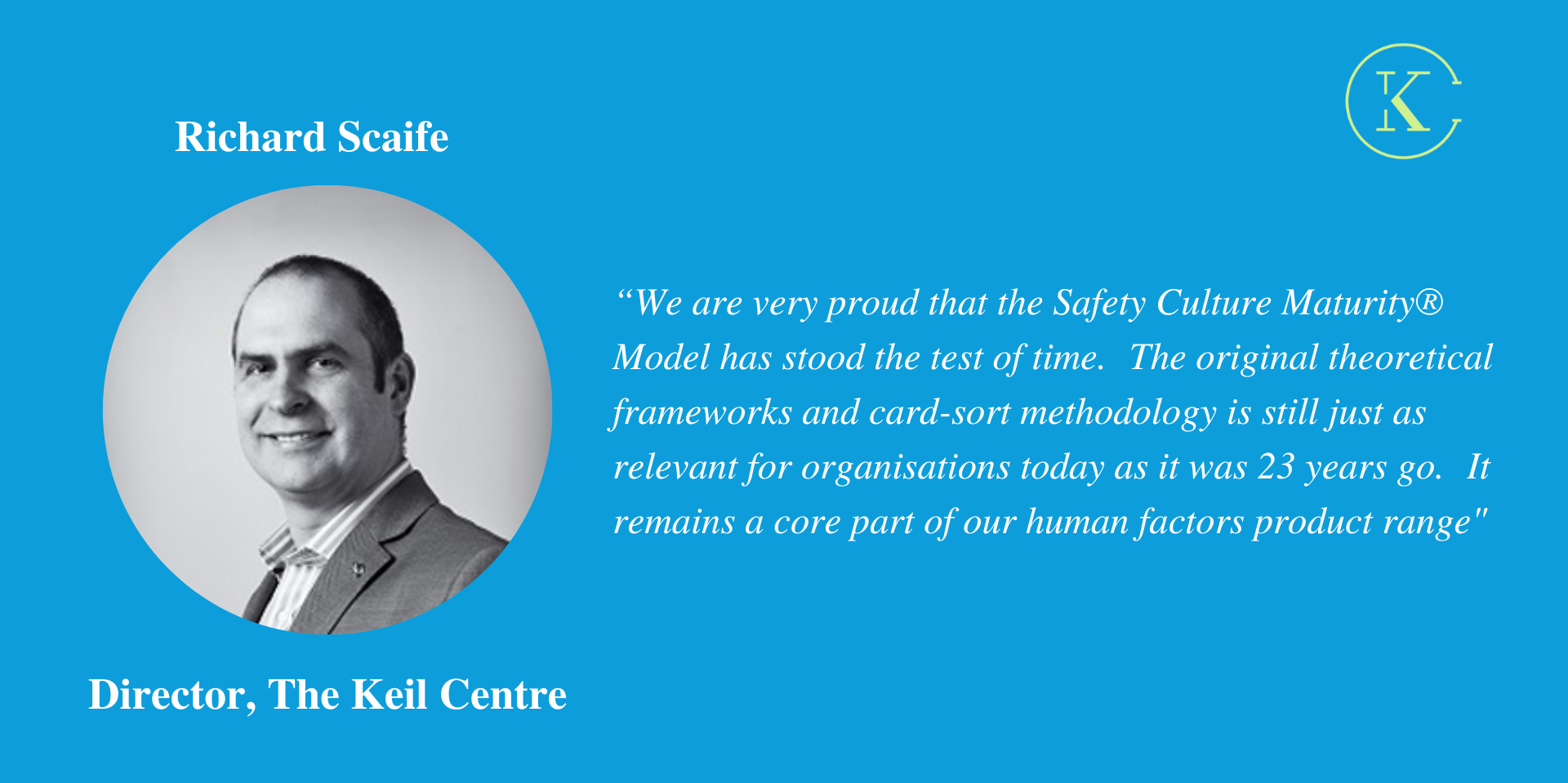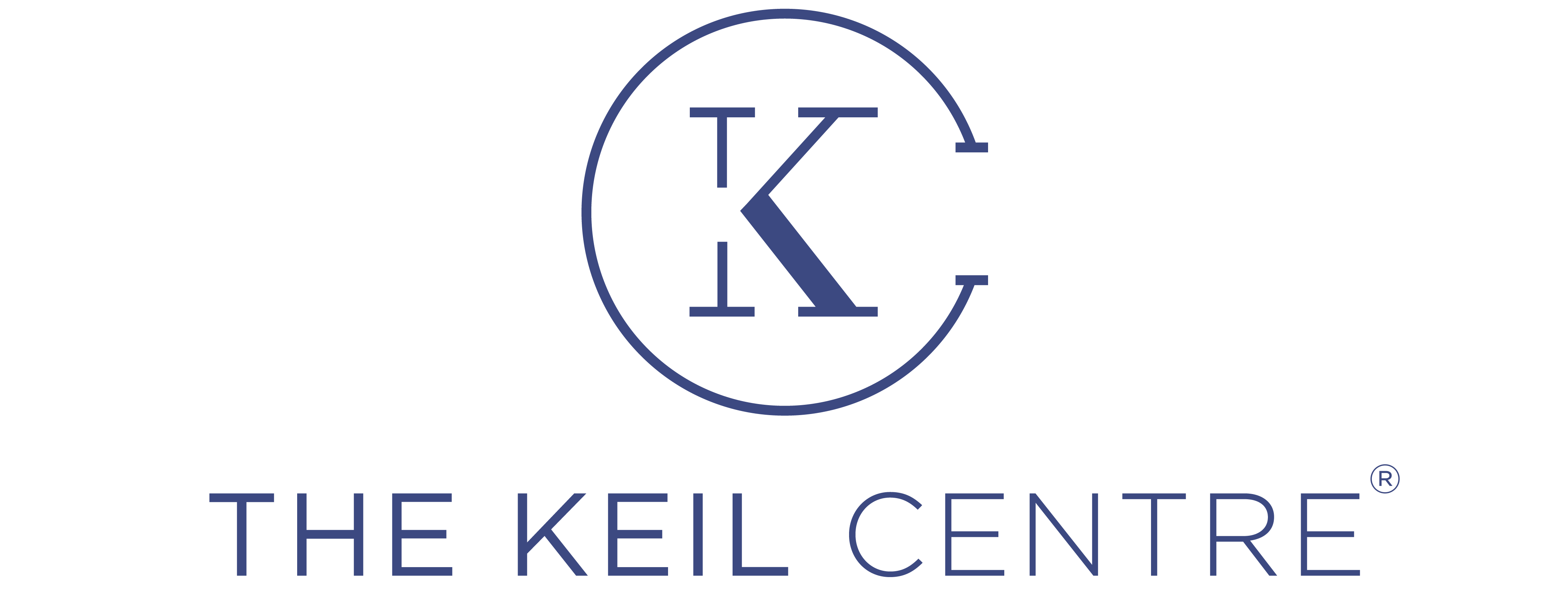Safety Culture Maturity®: Celebrating over 20 yrs of success in improving safety culture
February 24, 2023


The Keil Centre® celebrates its 40th anniversary this year and we are proud to have continued to be a centre of excellence for the various branches of psychology and ergonomics since 1983. In that time, there have been some big changes in what we work on and also the way we work. But one thing has remained at the centre of what we do and that’s safety culture.
Businesses need to have the confidence that they have put in place measures to make sure that the people who work for them will go home to their families at the end of the working day in no worse shape than when they arrived in the morning.
Just eight years after we opened our doors, the shocking events of the 6th and 7th of July 1988 resulted in the loss of 167 people who had flown offshore to work on the Piper Alpha oil platform 120 miles northeast of Aberdeen. They all expected to be going home to their families after a couple of weeks working away.
The Cullen Enquiry into Piper Alpha highlighted a number of failings; it described the safety culture on board as abysmal. The UK Health and Safety Executive (HSE) and the oil and gas industry formed a body called Step Change in Safety, still in existence today, to look for ways to reduce the chances of an event like this happening again.
The Keil Centre was asked to contribute to the enquiry, and we researched the concept of safety culture extensively. We described how safety culture in any organisation is not just a static phenomenon, but a series of evolutionary stages that an organisation goes through. This work was published in the Step Change publication “Changing Minds” intended to provide industry and the regulator with guidance on how to make that step change in the culture in the offshore oil and gas industry.
The original research done by The Keil Centre shifted the thinking on safety culture and safety culture improvements. We argued that different types of improvement actions worked to improve safety culture, depending on how mature the culture was at the time of measurement. At the lower levels of maturity, levels of engagement at all levels of the company in improving safety performance tended to be low, so management intervention was the most effective way of improving the culture. As organisations developed their safety culture, engagement tended to grow and so solutions that involved employees at all levels started to become a more effective solution.
We felt that we had developed a new concept in the measurement of safety culture, so in 2001 we applied for the registered trademark “Safety Culture Maturity®”.
We also found that safety culture can be divided into a number of elements covering the visibility of management commitment, quality of communications around safety, and the ability of the company to effectively learn from incidents, accidents and near-misses.
It became clear that engagement and involvement were key to the development of a strong safety culture and so we looked at how we could measure safety culture accurately in a way that would start to build that engagement as part of the measurement process.
At that time, most of the safety culture assessment methods in existence were based on surveys – we wanted something more interactive and more engaging. We developed our assessment into a card sorting workshop, where delegates could rate the safety culture by discussing statements representing the levels of maturity to identify the appropriate level of maturity. Importantly, we also incorporated a problem-solving element to this approach where delegates had the opportunity to develop improvement actions for the organisation as part of the assessment.
There was a great deal of interest in this method of measuring safety culture, and some of the organisations that engaged with us won health and safety awards for having developed comprehensive plans for improving their safety culture.
Over the first few years of having developed the methodology, many organisations beyond the original target audience of oil and gas began using the assessment. In the first five years, the assessment was in use in pharmaceuticals, chemicals, manufacturing, transport and energy companies globally.
Safety Culture Maturity® became the standard against which new safety culture tools were measured. When the HSE developed their Climate Survey Tool, for example, they asked The Keil Centre to validate it using the Safety Culture Maturity® Model (SCM®M).
As the SCM®M grew in popularity so did its global reach. We translated all of the materials for the assessment process into ten international languages from Mandarin Chinese to Arabic. To date, we estimate that we have delivered SCM®M assessments on every continent multiple times with thousands of people from hundreds of organisations having participated since it was first developed.
So twenty-three years later we are still conducting Safety Culture Maturity® assessments all over the world, in the original format and also online. We have innovated to keep providing the service through tough times over the years and we will continue to do so for many more to come.
If you would be interested in learning more about safety culture or our Safety Culture Maturity® Model, please contact Richard Scaife (richard@keilcentre.co.uk)


